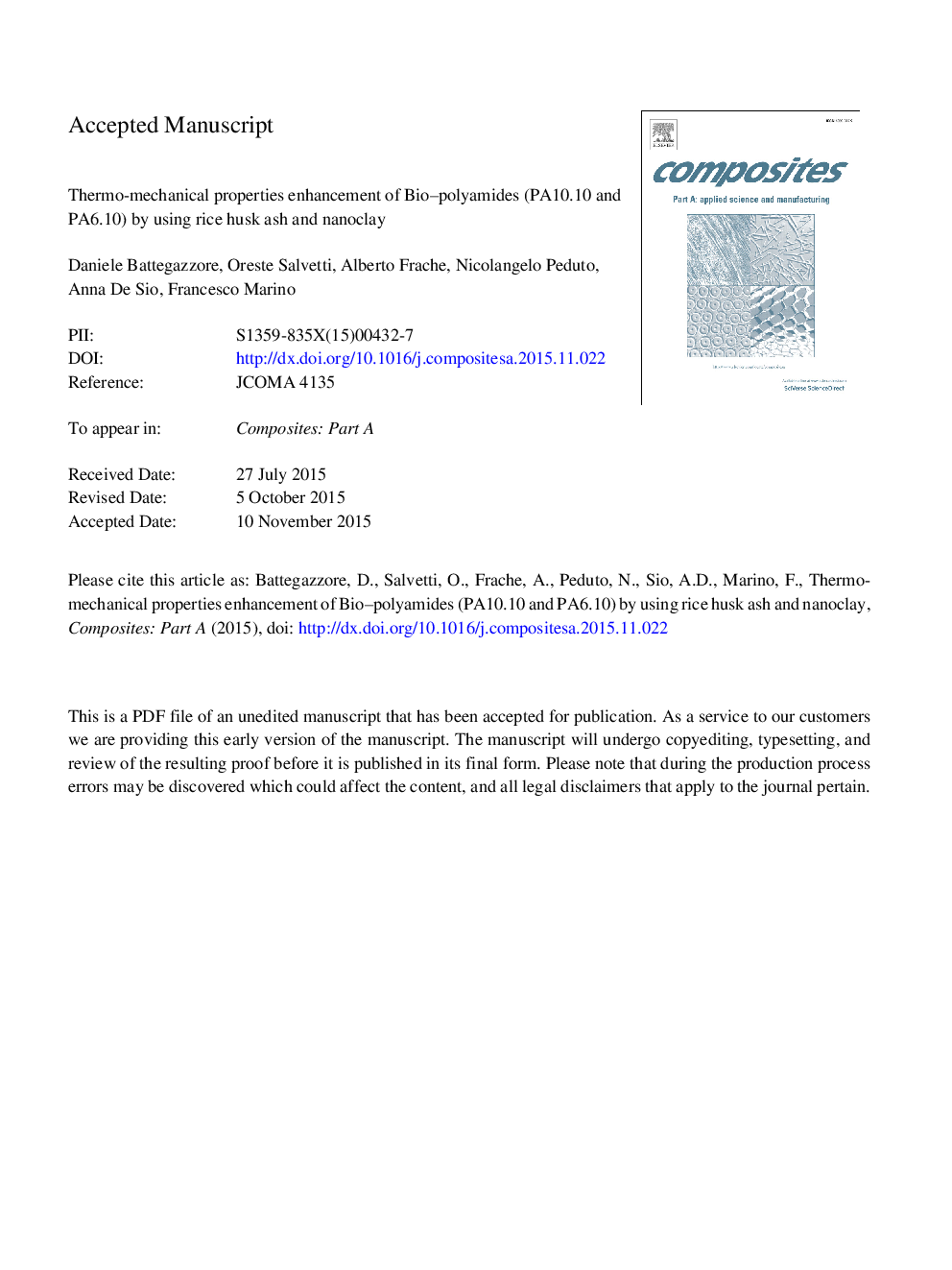| Article ID | Journal | Published Year | Pages | File Type |
|---|---|---|---|---|
| 7891304 | Composites Part A: Applied Science and Manufacturing | 2016 | 30 Pages |
Abstract
Composites consisting of fully (PA10.10) and partially (PA6.10) bio-based polyamides and 10-20Â wt.% rice husk ash (RHA) was prepared by melt compounding. The mechanical analysis data showed that RHA induced significant improvement in Young's modulus, a slight reduction in the tensile strength and a large decrease in the deformation at break. Pukanszky's model was used to evaluate the filler-matrix interactions. The two PAs exhibited similar filler-matrix load transfer with RHA and better performance than polylactic acid (PLA). The addition of modified clay (Cloisite 30B) to the systems with 10Â wt.% of RHA gave the best mechanical properties and filler-matrix interactions, notwithstanding the matrix used. Finally, DMT analyses demonstrated that the addition of RHA caused an increase in the heat deflection temperature (HDT) compared to the neat PA matrices. Furthermore, the simultaneous presence of RHA and clay provided the best results.
Keywords
Related Topics
Physical Sciences and Engineering
Materials Science
Ceramics and Composites
Authors
Daniele Battegazzore, Oreste Salvetti, Alberto Frache, Nicolangelo Peduto, Anna De Sio, Francesco Marino,
